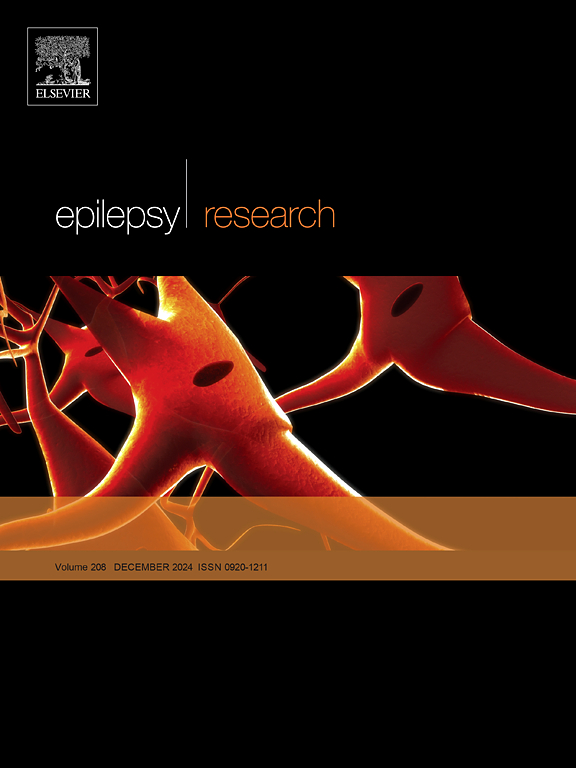治疗难治性癫痫的大麻衍生物及其合成类似物:系统回顾和荟萃分析
IF 2
4区 医学
Q3 CLINICAL NEUROLOGY
引用次数: 0
摘要
背景:大麻二酚和其他从大麻植物中提取的合成类似物已被研究作为治疗难治性癫痫的替代药物。目的:评价大麻衍生物治疗难治性癫痫的疗效。检索方法:在多个数据库中检索文献,并手工检索相关研究的参考文献列表、灰色文献和临床试验注册表。选择标准和分析:纳入随机对照试验,使用Cochrane偏倚风险工具评估偏倚风险。使用GRADE方法评估证据的确定性。主要结果:纳入7项随机临床试验。大麻二酚20 mg/kg/天和10 mg/kg/天可能会增加每月癫痫发作减少≥ 50 %的参与者的频率(20 mg/kg/天:相对风险[RR] 1.92;95 % 95 %CI 1.49-2.46, n = 575,4个随机对照试验;10 mg/kg/day: RR 1.94;95 %CI 1.32-2.86, n = 280,2个随机对照试验,中等证据确定性)。CBD 20 mg/kg/天可能会增加严重不良事件的发生率(RR 2.30;95 %CI 1.36-3.89, n = 583,4个rct,中等证据确定性),并可能随着CBD 10 mg/kg/天而增加(RR 1.62;95 %CI 0.92-2.84, n = 272,2个rct;证据的低确定性)。其他纳入的干预措施的证据确定性从非常低到低不等。结论:对于大多数纳入的比较和结果,大麻素的作用存在不确定性。未来的随机对照试验可能有助于更好地了解大麻素对难治性癫痫的作用。本文章由计算机程序翻译,如有差异,请以英文原文为准。
Cannabis derivatives and their synthetic analogs for treatment-resistant epilepsy: A systematic review and meta-analysis
Background: Cannabidiol and other synthetic analogs from the Cannabis sativa plant have been investigated as alternative for the treatment of refractory epilepsy. Objective: to assess the effects of cannabis derivatives for the treatment of refractory epilepsy. Search methods: a search of the literature was carried out in the several databases, as well as a manual search of the reference lists of relevant studies, gray literature and clinical trial registries. Selection criteria and analysis: randomized controlled trials were included, and the risk of bias was assessed using the Cochrane risk of bias tool. The certainty of the evidence was assessed using the GRADE approach. Main results: Seven randomized clinical trials were included. Cannabidiol 20 mg/kg/day and 10 mg/kg/day probably increased the frequency of participants who achieved a ≥ 50 % reduction in monthly seizures (20 mg/kg/day: Relative Risk [RR] 1.92; 95 % 95 %CI 1.49–2.46, n = 575, 4 RCTs; 10 mg/kg/day: RR 1.94; 95 %CI 1.32–2.86, n = 280, 2 RCTs, moderate certainty of evidence). The incidence of serious adverse events is probably increased with CBD 20 mg/kg/day (RR 2.30; 95 %CI 1.36–3.89, n = 583, 4 RCTs, moderate certainty of evidence), and may be increased with CBD 10 mg/kg/day (RR 1.62; 95 %CI 0.92–2.84, n = 272, 2 RCTs; low certainty of evidence). Certainty of evidence for other included interventions ranged from very low to low. Conclusions: For most included comparisons and outcomes, there were uncertainties regarding the effects of cannabinoids. Future RCTs could contribute to a better understanding of the effects of cannabinoids for refractory epilepsy.
求助全文
通过发布文献求助,成功后即可免费获取论文全文。
去求助
来源期刊

Epilepsy Research
医学-临床神经学
CiteScore
0.10
自引率
4.50%
发文量
143
审稿时长
62 days
期刊介绍:
Epilepsy Research provides for publication of high quality articles in both basic and clinical epilepsy research, with a special emphasis on translational research that ultimately relates to epilepsy as a human condition. The journal is intended to provide a forum for reporting the best and most rigorous epilepsy research from all disciplines ranging from biophysics and molecular biology to epidemiological and psychosocial research. As such the journal will publish original papers relevant to epilepsy from any scientific discipline and also studies of a multidisciplinary nature. Clinical and experimental research papers adopting fresh conceptual approaches to the study of epilepsy and its treatment are encouraged. The overriding criteria for publication are novelty, significant clinical or experimental relevance, and interest to a multidisciplinary audience in the broad arena of epilepsy. Review articles focused on any topic of epilepsy research will also be considered, but only if they present an exceptionally clear synthesis of current knowledge and future directions of a research area, based on a critical assessment of the available data or on hypotheses that are likely to stimulate more critical thinking and further advances in an area of epilepsy research.
 求助内容:
求助内容: 应助结果提醒方式:
应助结果提醒方式:


